Naqqāli, Iranian Dramatic Story-telling
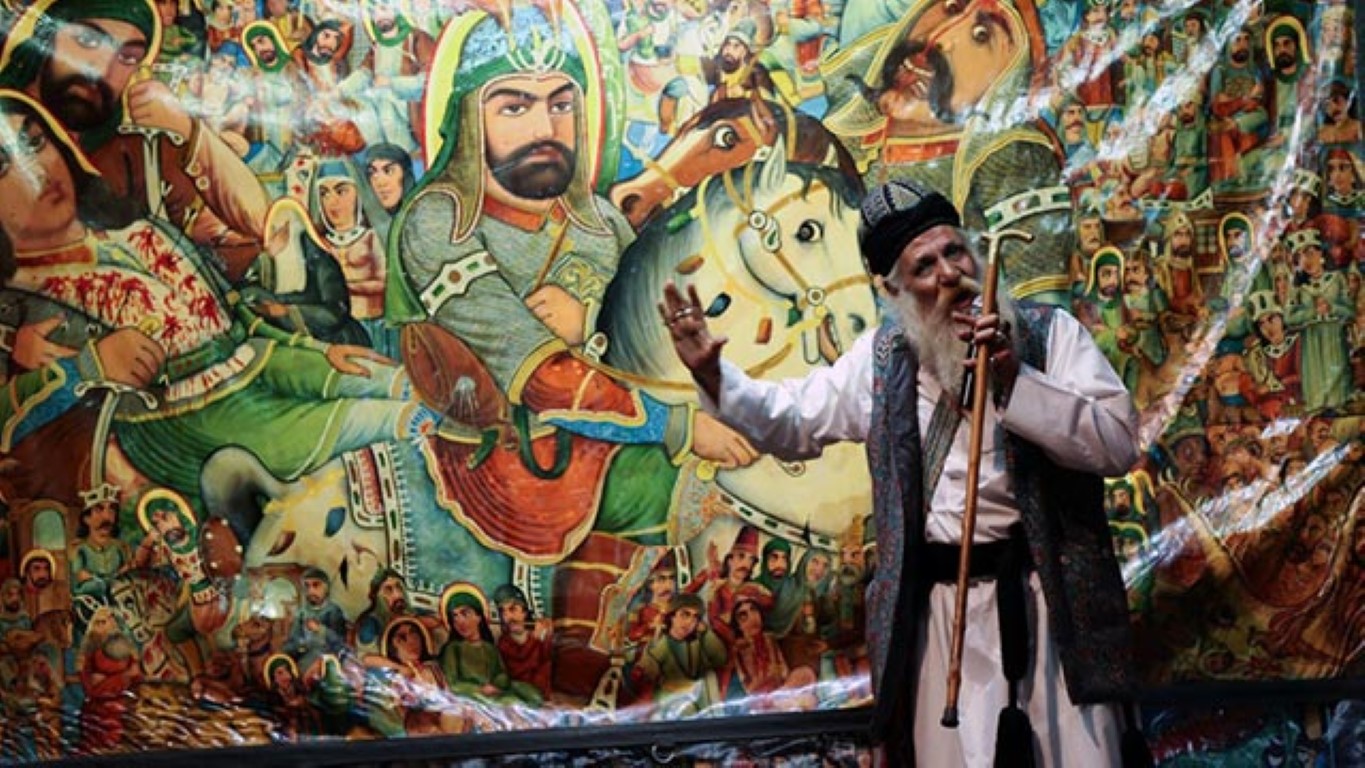
Recitation or Parda Khwani is one of the ancient rituals in Iran, with different changes over time. The origin of recitation goes back, in terms of etymology-meaning “story-telling”-, to Parthian period and the Gosans who were well-known for relating the epic stories. Although there existed other similar traditions in form of storytelling accompanied by music, during Sassanid period, with paying especial attention to folklore, national and epic narratives, we mean by recitation, nowadays, a prospered ritual in Islamic era which cannot be assessed separated from its religious attributions.
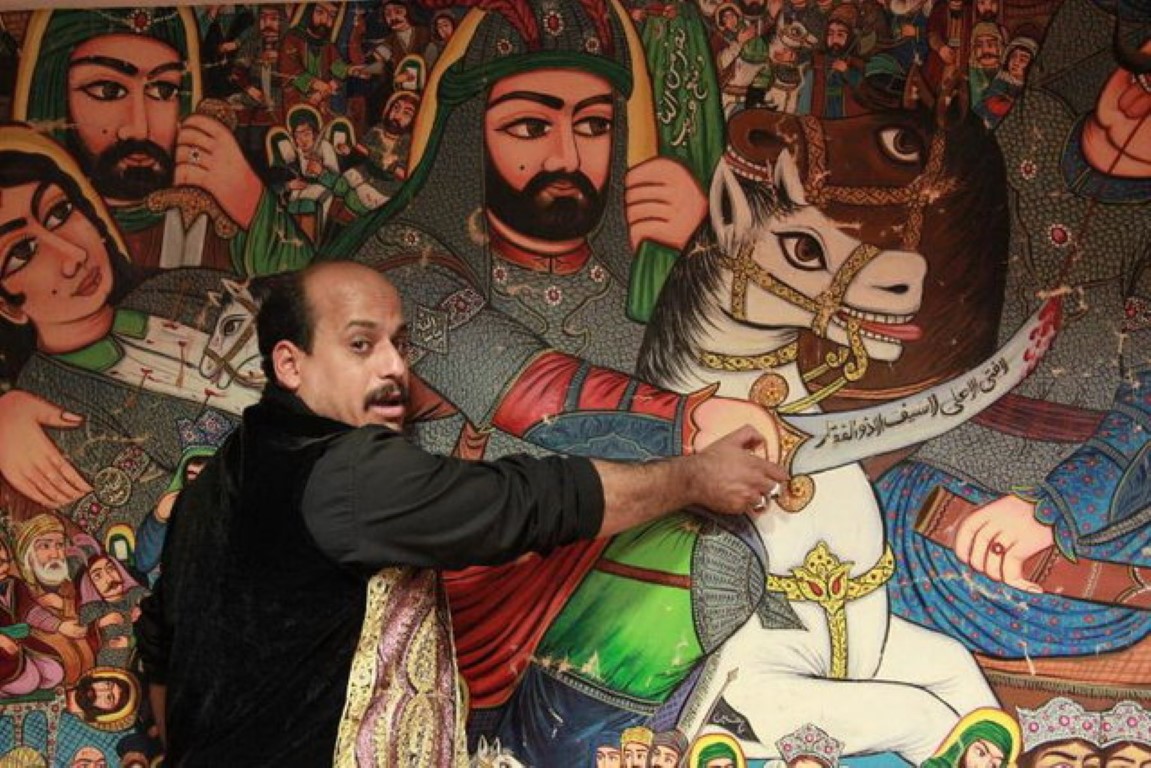
In addition to narrating the epic stories of Shahnameh (Book of King), moral tales of Masnavi (the mystical masterpiece of Molana-Jalal al-Din Mohammad Rumi) and even the popular Iranian romantic stories (including Leili & Majnun, Khosrow & shirin), recitation in Islamic period is mostly concerned with the religious stories and narratives, stressing the importance of Karbala and the Day of Ashura. Therefore, there is a tightly-coupled relationship between recitation and literary genres like Maghtal Nevisi (Martyrographie: the stories of martyrdom of Ali and his family).
Because this genre made a contribution to some famous rituals concerning Ashura; one of the most important of them is Rawda Khwani (reading the Rawda- commemoration of Shia’ religious tragedies), which is a kind of religious recitation. The identified basis of Rawda Khwani is the famous Hossein Waiz Kashifi’s Maghtal (the martyrdom book) namely Rawdat al-shuhada which was written in 908 HJ, when the Safavis period had been begun in Iran; this literary work created the foundation of all Shia’ Rawdas and consequently the rituals of Tazieh and Shabih khwani (presenting or staging a resemblance) in Iran.
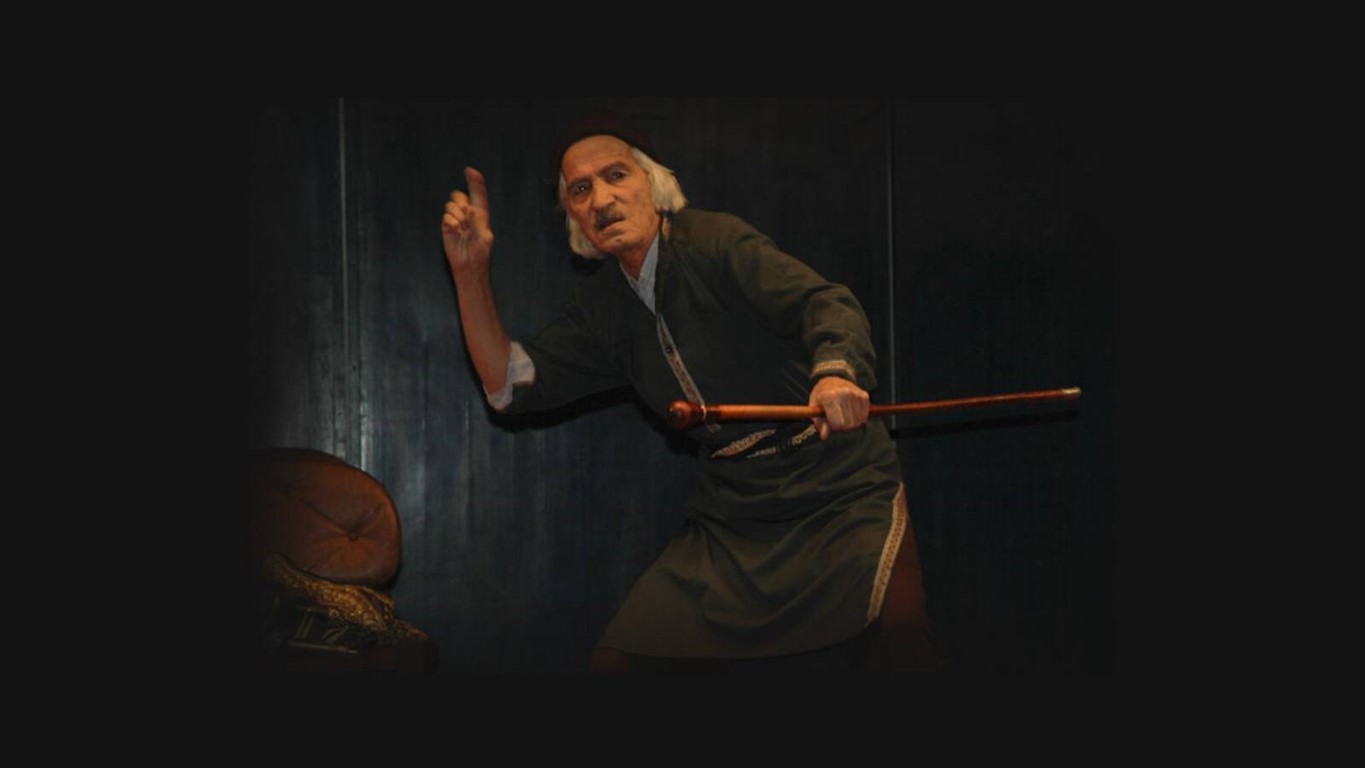
In addition to the musical aspect, rhetorical and high verbal skills of the narrator, their powerful memory and enough mastery of the ancient epic, moral and religious narratives, the glorious ritual of recitation is always accompanied by a visual element, too, so that different kinds of painting play a pivotal role in recitation in all areas of Iran. The historians have traced the primary samples of these paintings in early Islamic era when the religious Parda was appeared. Buyyids, the Iranian Shia believers, have gone the first way towards creating Parda for religious, specifically Ashura, paintings while promoting them.
Parda was being used, subsequently, in Safavid era, during the Shah Ismail attack to Uzbekan, in Herat, in order to excite the Iranian Shia army. The current travelogues also report a person called Ghazieh Khwan in the court of Shah Safi who was performing the ancient and contemporary kings’ acts using dramatic and exciting movements.
Among different kinds of folklore, narrative and religious paintings, Coffee-House painting has a tightly-coupled relationship with recitation; some believes that the evolution process of Rawda Khwani ritual, from its Safavid static into the Qajar dynamic form, in Husseinieh, can be considered as the root of these portable paintings which have been called Shamayel (means Icon) OR Parda, both as the products of Tazieh; therefore, the recitation ritual when comes with paintings is also called Shamayel-Gardani OR Parda-Dari.
Nowruz
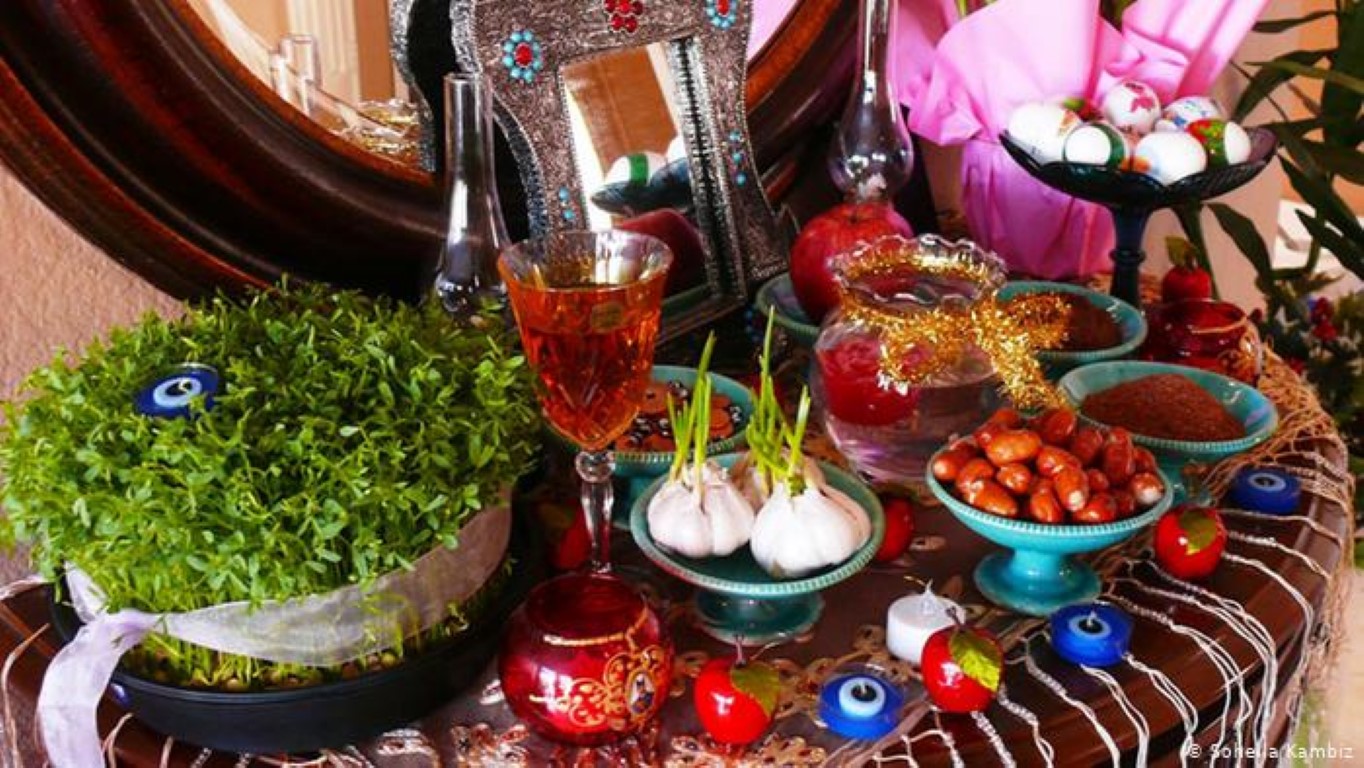
Nowruz indicates the first day of the New Year in Iran and some of neighboring countries. According to Dehkhoda: “the first day of Farvardin when the sun reaches the Borj-e Haml; the beginning of spring which means the new day. It is stated that God created the Man in this day and all seven stars were ordered to revolve.
Nowruz Festivity, Nowruz Eid, Farvardin festivity or Spring Festivity is the greatest ceremony in Iran in which the first day of Farvardin month and the solar year begin. The exact date of Nowruz festivity is not clear to us; however, it dates back to several millennia BC based on the historical evidence. The Iranian great poets have referred to the name of Nowruz several times: “be all your years winsome/ be all your days Nowruz”, Ferdowsi said.
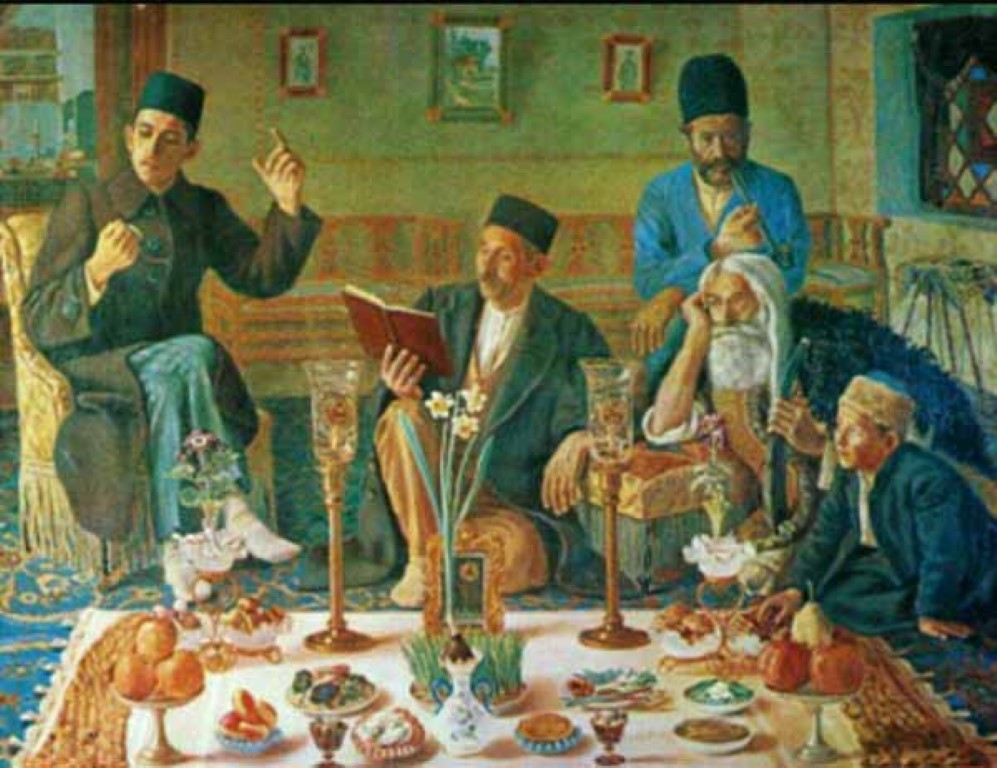
“The Nowruz breeze is pleasant on the face of flower/ the eyeful beloved is delightful for the view of garden”, Khayyam. These poems all indicate the importance of this ancient ceremony. The date of Nowruz was not clearly determined in the past and what is now called Nowruz is deeply indebted to the efforts of the Seljuk Jalal al-Din Malekshah who gathered some of the Iranian astronomers, such as Hakim Omar Khayyam, to collect the Iranian calendar; the place of Nowruz proved to be on the first day of Farvardin based on their precise calculations.
They developed the famous Jalali Caledar based on which each year has typically 365 days, however, every four years a leap year occurs with an extra day, 366 days. This calendar was ratified in 392 HJ. The main symbol of Nowruz is “Sofre-ye Haft Sin” which has been recognized as the most popular ritual in different regions of Iran and as a common ceremony of all tribes who celebrate Nowruz. Seven items all starting with the letter “S”- “Seen” OR س in Farsi which is the fifteenth letter in Persian alphabet- are put on the Sofre, i.e., the Iranian traditional fabric or plastic piece which is used for serving the food, instead of table.
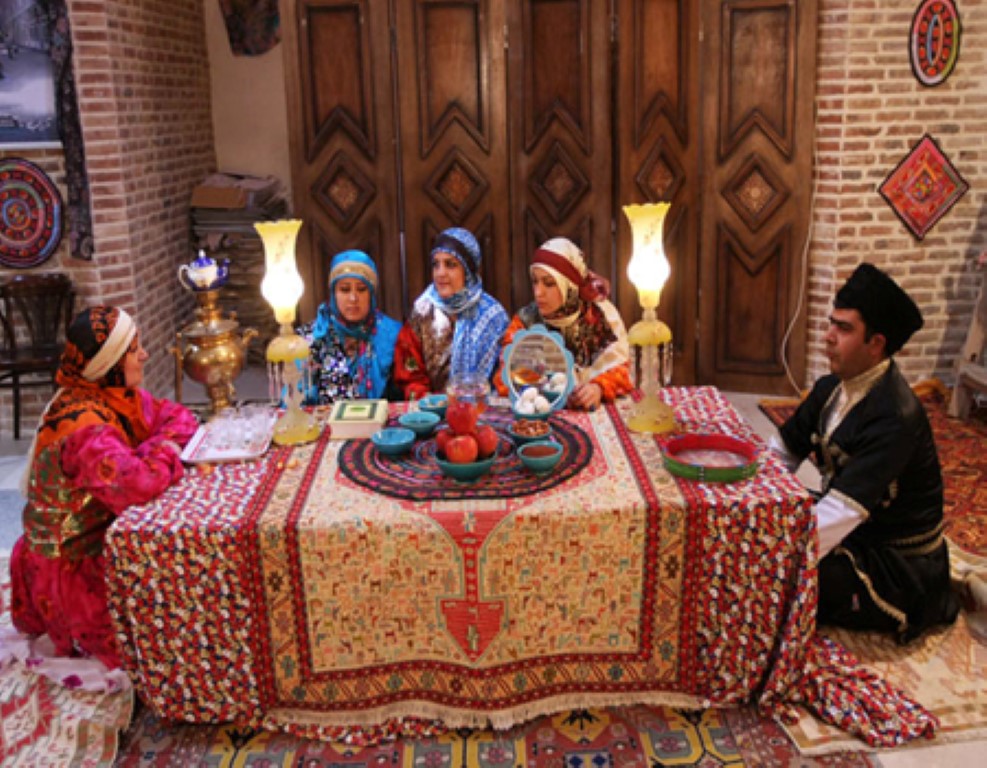
Sumac (a powder spice), Seer (Garlic), Samanu (a kind of sweet paste), Sekkeh (coin), Serke (vinegar), Sabzeh (grass) and Sib (apple) are seven items on Sofre-ye Haft Sin which symbolize the love, kindness, life, blessing, health and livelihood. Muslims include, also, their Holly Quran on the table in addition to the mirror, red fish, candle, colored eggs and hyacinth. The book of Diven-e Hafez and Ferdowsi’s Shahnameh have also a special place in their rituals.
Gathering around the Sofreh, family members celebrate the beginning of Nowruz. The special meal of Nowruz is Sabzi-Polo and Fish. This festivity of Nowruz was inscribed on the list of UNESCO Intangible Cultural Heritage in 2009.
Art of crafting and playing with Kamantcheh
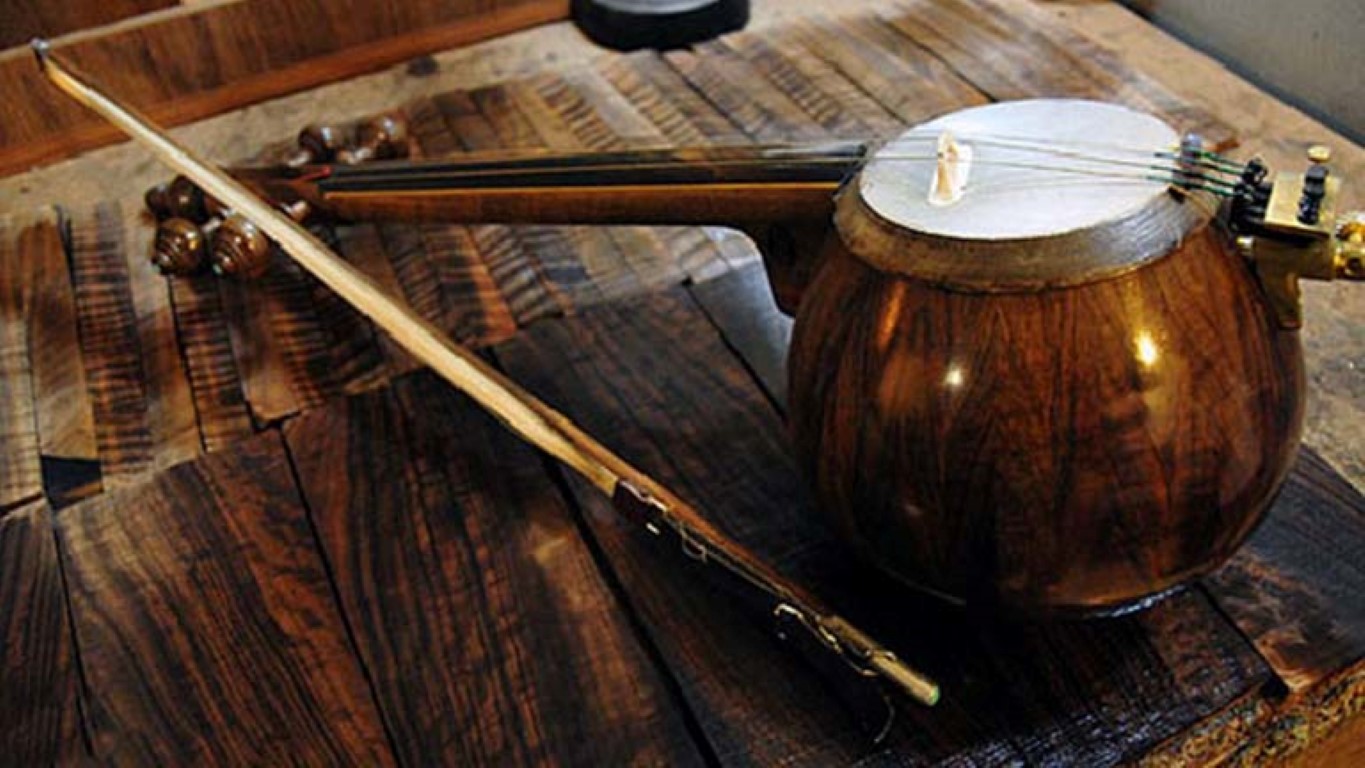
Kamancha is one of the Iranian traditional and original musical instruments with a long history. The name of Kamancha has been appeared in some poems and texts from early Islamic periods. The first historic evidence of Kamancha is related to Farabi’s Kitab al-Musiqa al-Kabir in 4th century AH. He called Kamancha is his book by its Arabic name “Rebab”; therefore, some believe that Kamancha has been made by the evolution of Rebab.
Some poets as Masud Sa’d in 8th century AH have referred to the name of this instrument and also we can observe the depiction of Kamancha player in Chehel Sotoun Hall of Isfahan (Safavid period). Kamancha was one of the most authentic musical instruments in Iran during this period. It is placed in the group of bowed string musical instruments constituting of three parts of bowl, handle and base made of metal, bone and skin.
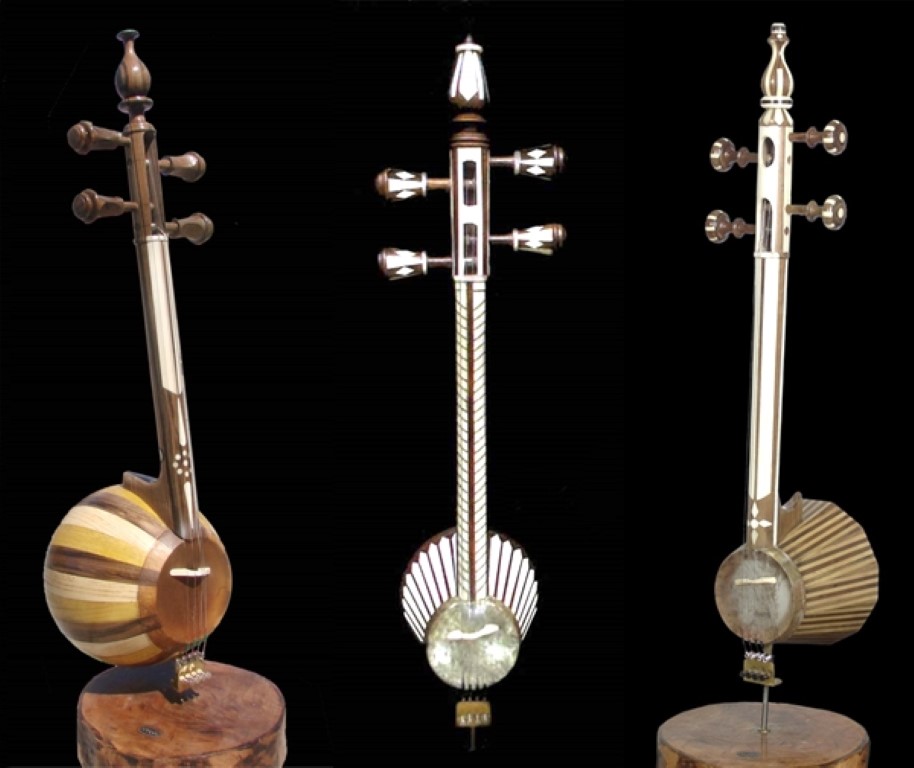
The bowl in the instrument is the producer of sound used as a sound box. It had firstly three strings and the forth one was added in Qajar period in an imitation of Violin. In the past, the bowl was being made of maple and walnut wood and decorated using inlay and shell, however, today it is mostly made of berry wood. The bowl is covered by skin on which the bridge and strings are set.
The Kamancha bow is made of a narrow wood with parallel threads of horsehair stretched between two ends. Kamancha is played in sitting down mode held by the left hand vertically and the player moves the bow on the strings horizontally.
Violin entered Iran in the period of Mozaffar ad-Din Shah and it became mostly the substitute of Kamancha by many players. Therefore, Kamancha was shelfed for a long time up to 1332 SH when Ali Asghar Bahari put lots of efforts into teaching Kamancha; when the national radio broadcasted his solo Kamancha for the first time many people became increasingly interested in learning Kamancha and it was flourished again.
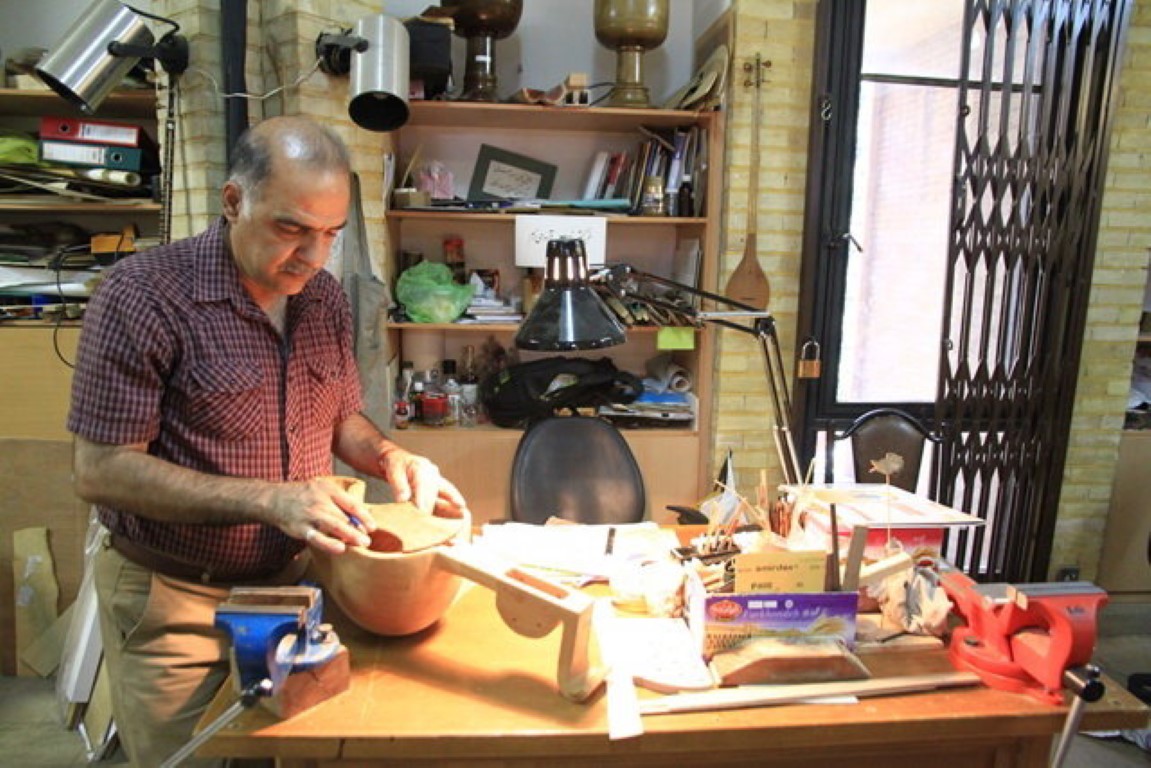
Nowadays, we cannot fine a traditional musical group without the sound of Kamancha. Among the most prominent Kamancha players in Iran Ali Asghar Bahari, Kehan Kalhor, Rahmatollah Badiei, Mojtaba Mirzaheh and Ardeshir Kamkar must be referred. In 2017 Art of crafting and playing with Kamantcheh was inscribed on the UNESCO Representative List of the Intangible Cultural Heritage of Humanity.
Pahlevani and Zoorkhanei Rituals
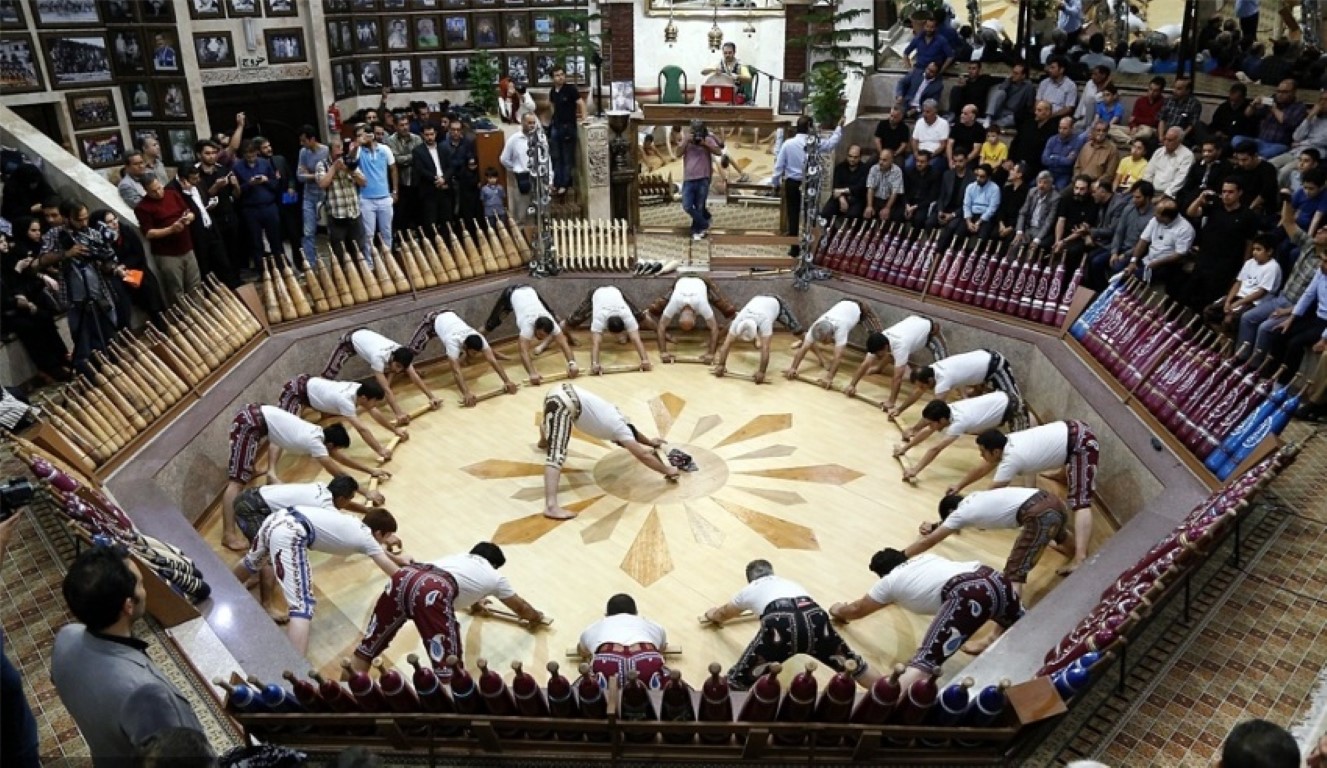
Zoorkhaneh or Humorous sport is an epic art indicating the Islamic, mythic and ancient Iranian beliefs. This traditional sport is done by 10 to 20 men and it is considered a kind of dramatic sport like Gymnastics. The place of performing this sport is traditionally called Zoorkhaneh (the house of power) which is an enclosed club similar to the shrines in ancient Iran, based on some beliefs.
The establishment of the first Zoorkhaneh has been attributed to Pouria Vali, the Iranian best-known athlete, in 722 HJ; it is, however, goes back to the ancient times. The entrance of Zoorkhaneh is intentionally built smaller and shorter than the other buildings’ doors, because an athlete has to bend for entering, as the symbol of his humility. The roof of the club has a high dome shape similar to other religious and historical buildings.
The field of playing movements placed in an octagonal hollow with about 70 cm depth where the followers and equipment situated around. Wearing the special athlete clothes, a group of men present in the hollow during the performance, and they play some epic movements individually or collectively. A person named Morshed directs the rhythm of performance through playing Zarb-the main musical instrument in this ritual- and singing the humorous, epic or religious poems. He is considered to be the symbol of Master and Sheikh in the Iranian mysticism who reminisces and readouts the moral and social teachings.
There exist different and special equipment in Zoorkhaneh; interesting in this respect are kabbāde- a bow-shaped iron instrument-, push-up-board, Mill- a large wooden sport weight used exclusively in Zoorkhaneh- and stone- two flat stones in form of a shield used as a sport weight in Zoorkhaneh competitions. With this regard, some believes on Zoorkhaneh Sport as the oldest form of bodybuilding in the world.
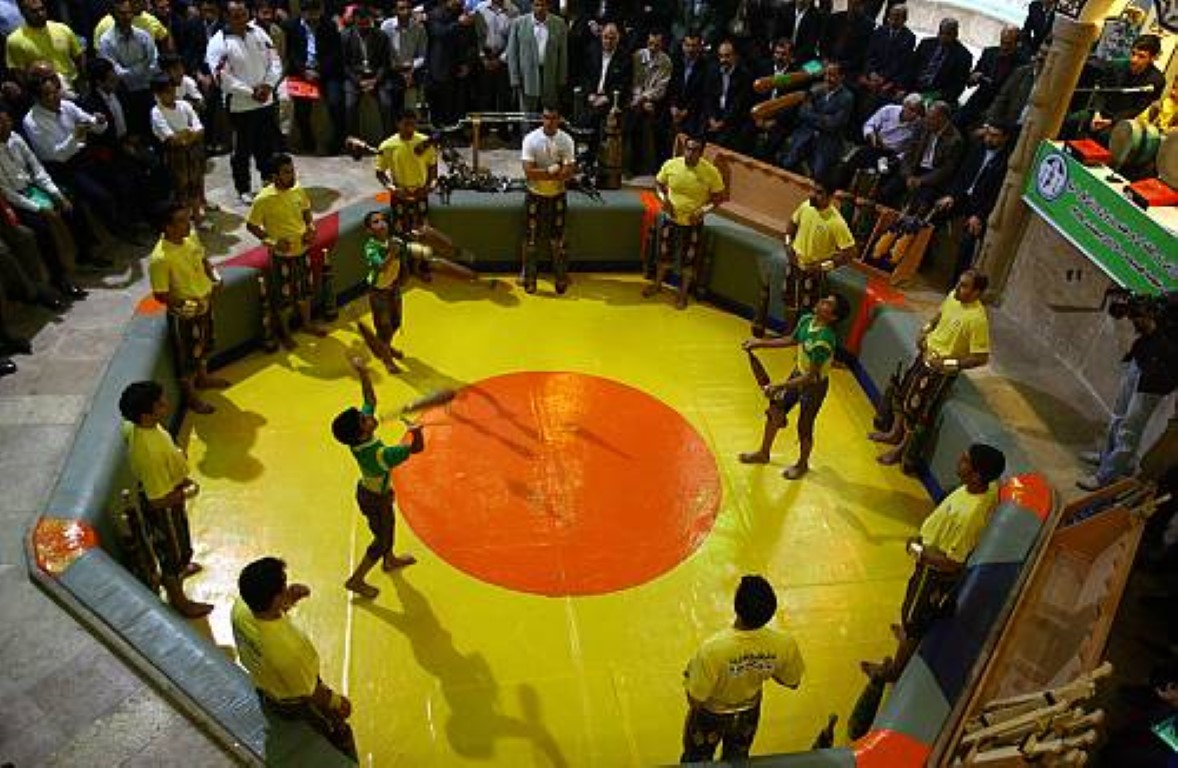
What is, however, remarkable is that those who come to Zoorkhaneh for learning these sport practices in the past had to learn the spirit of chivalry, generosity, charity and other heroic traits. Today, there exist 500 Zoorkhanehes in Iran 50 of them are active in Tehran city.
In 2010, Zoorkhaneh Sport was inscribed on List of the Intangible Cultural Heritage of Humanity in UNESCO.
Skills of Crafting and Playing Iranian Dotār
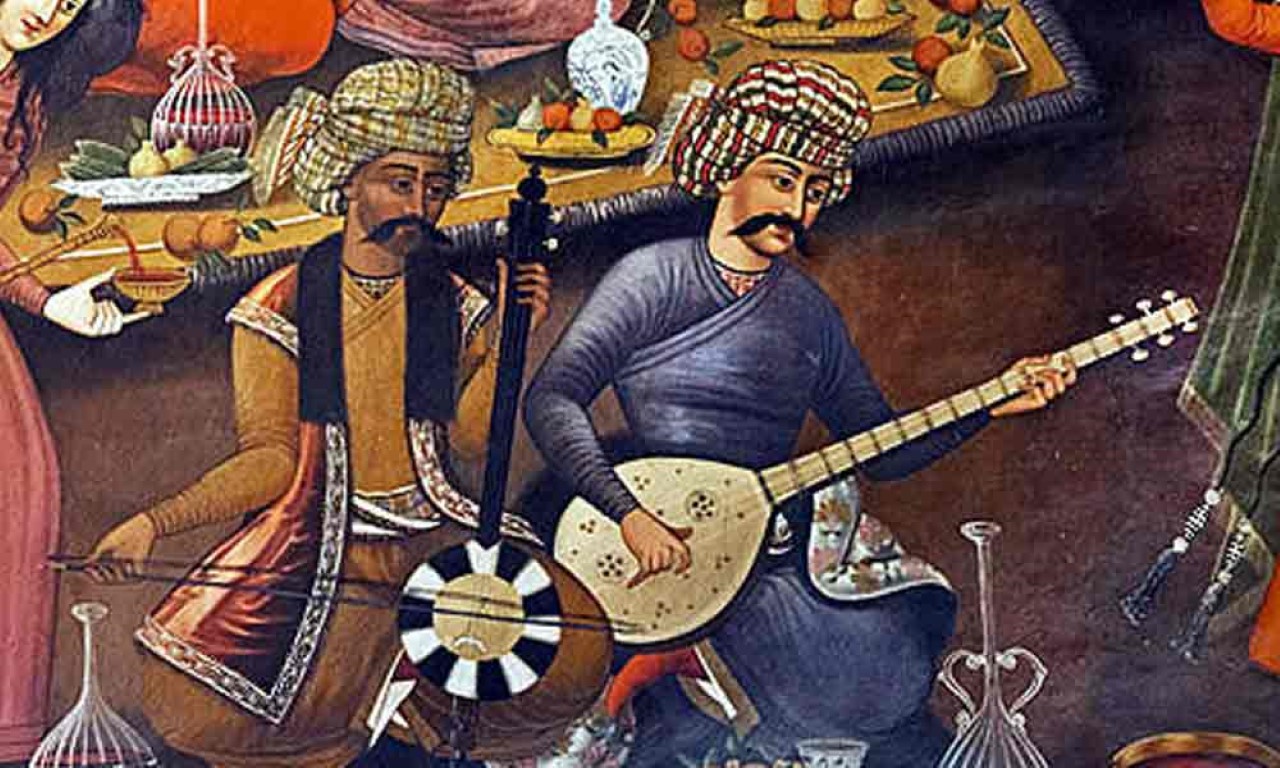
Dotār is the oldest stringed musical instrument not only in Iran, but also in all the Middle East and Central Asia. The depiction of this musical instrument is existing in some of the ancient rock reliefs. In a book composed in Pahlavi language Dotār is called Tanbur or Tambur.
Some of the musical instruments, songs and music have been mentioned in the narratives of the fictional history of Iran (e.g. Pishdadian and Kayanian dynasties) and in the historical texts (related to Medes, Achaemenid, Parthian and Sassanid). We read in Shahname, in the entry of Kay Kāvus Kingship and His Going to Mazandaran: “he sat happily along the fountain, found a golden cup and filled it of wine/ he also found a Tanbur next to the wine/ and made the desert a festivity by playing”. Moreover, in the existing Pahlavi texts and stories of ancient times we can see the name of some of the current musical instruments; for example, in Pahlavi story of Ridag and Khosrow: “The king asked which musicianship is better and more pleasant? Ridag answered that these are all fine and delightful: Chang, Tanbur, Barbat and Nāy”. As obvious by the ancient manuscripts of the Persian history and literature the age of this musical instrument can be estimated to more than six thousands of years.
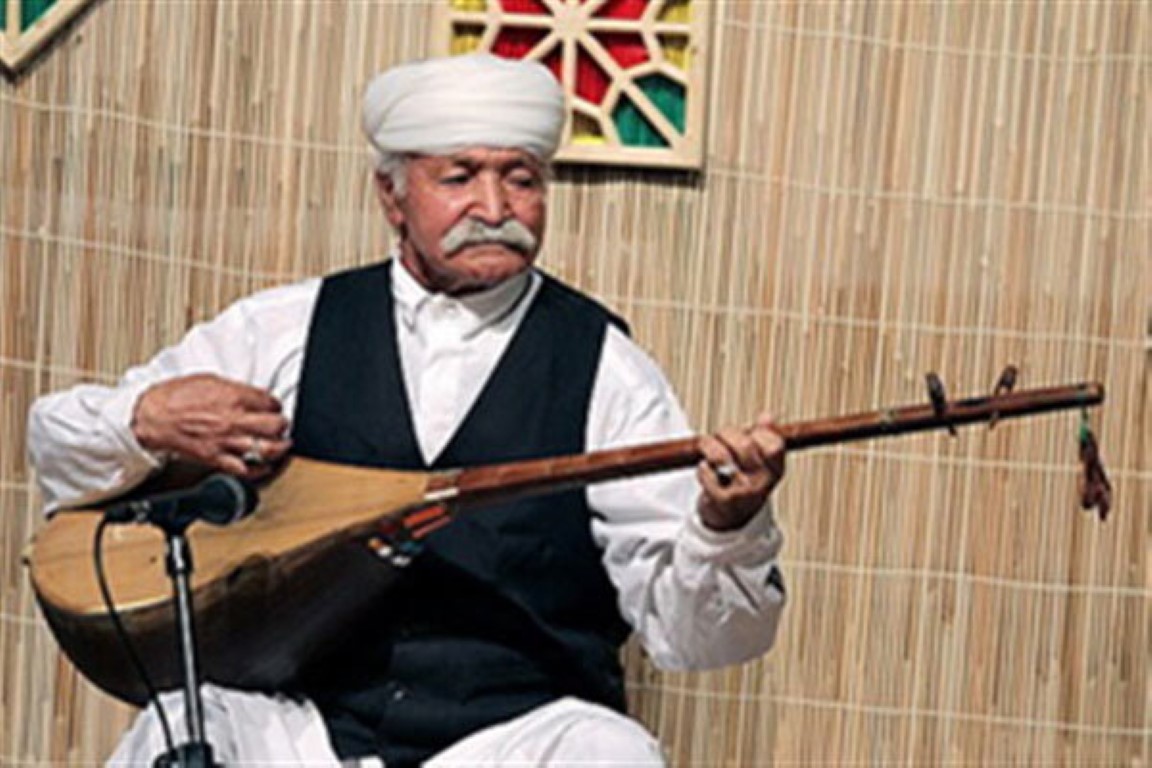
There are two kinds of Dotār in the written documents of the past so that we know one of them as Khorasani Dotār and another as Baghdadi Dotār, according to most of the existing literature. The great Iranian philosopher and scientist, Al-Farabi, established his musical research based upon Dotār-e Khorasani opening an independent entry for scientific description of the instrument in his highlighted and famous work Kitab al-Musiqa al-Kabir (The Great Book of Music).
As obvious by its name, Dotār has two strings which are played by the finger or plectrum. Today the crafting and playing Dotār is popular in the regions of the east and north of Khorasan, Torkaman regions, Katul in Golestan province and the east of Mazandaran. In fact, Dotār can be considered as the musical instrument of the northeast regions of Iran. Dotār is usually crafted using the wood of mulberry, Armenian plum, jujube and walnut trees and its strings were made of silk instead of wire in the past.
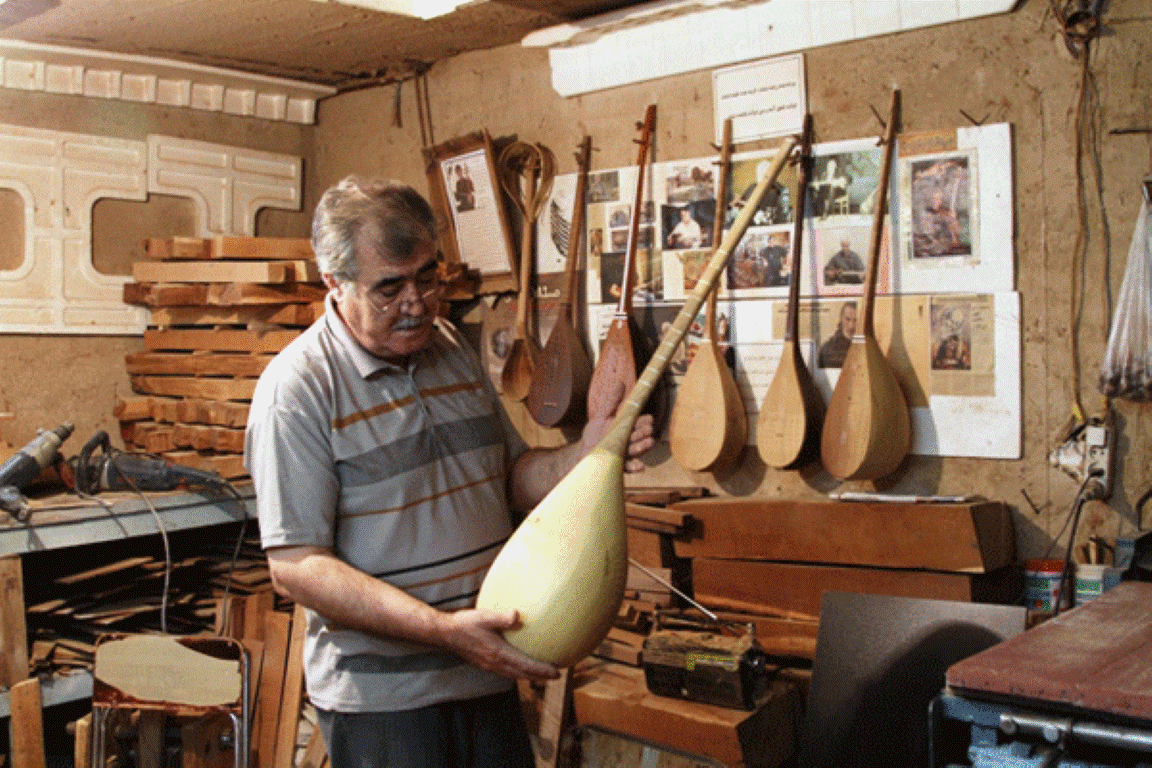
The greatest Dotār player of Iran, Haji Qorban Soleimani describes the tenor string of his Dotār to be female (Hava) and the bass one as male (Âdam). Highly important among the skillful Dotār players of the east of Iran are also Mohammad Soleimani, Abdollah Sarvar Ahamdi, Gholamali Pourataei and Osman Mohammadparast.
In Azar 1398 (December 2019) the skill of crafting and playing Iranian Dotār has inscribed on the UNESCO’s Intangible Cultural Heritage of Humanity.
Chogan (Polo)
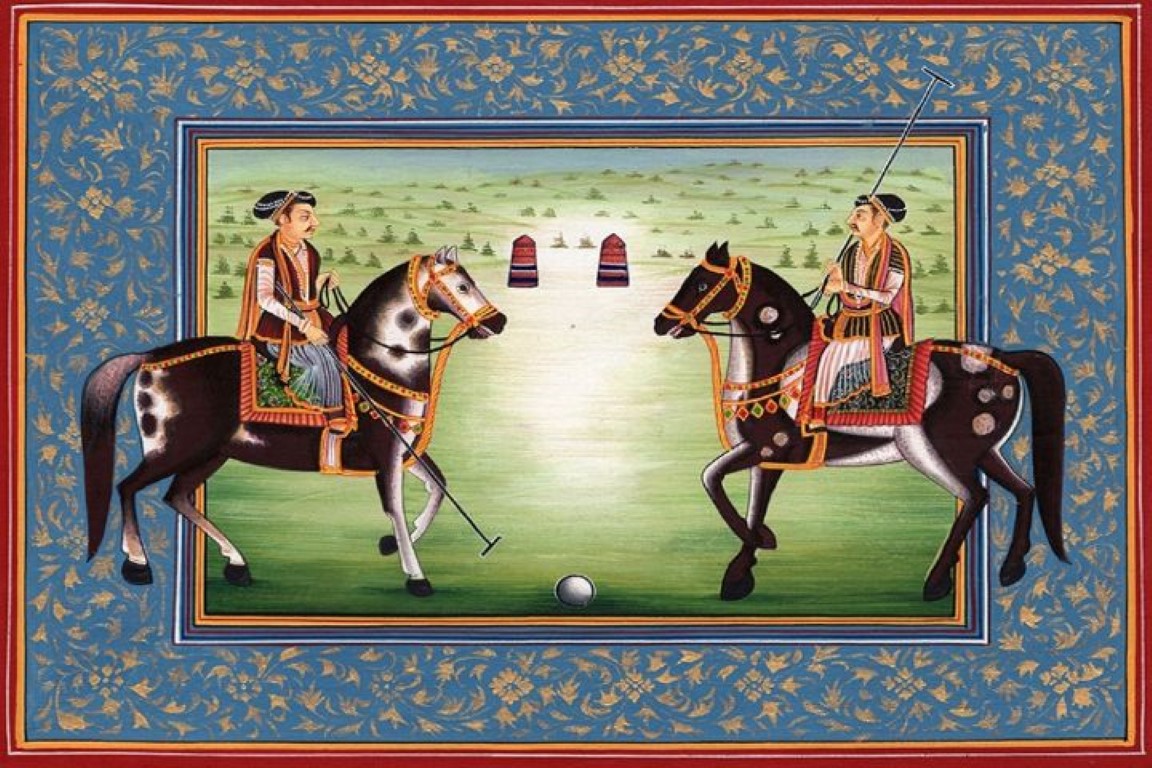
Polo, Iranian Royal Game
Today introduced by Olympic international committee as one of the universal sports. Polo has been popular among the kings and Iranian grandee in the past and its name as an aristocratic sport is derived from that. This game dates back to 600 years BC and its genesis is related to Achaemenid era. In fact, Polo firstly just had a recreational function in order to show the Iranian military horses talent. Based on the historical evidence, Shah Abbas I was playing Polo in Qazvin and Isfahan (Naqsh-e Jahan square). Unfortunately, Polo gradually was forgotten after the Safavid era, however, it was considered again through contact with Europeans in Pahlavi era, but its former significance never returned again. Nowadays, some effort has been done to promote the Polo and it is hoped that Polo will be inscribed on the UNESCO world heritage list as an Iranian sport up to 2017. The name of Polo is taken from a piece of wood which is used in this game and the players' proficiency in hitting the ball with Polo, horse riding, coordination and balancing in the game in highly important.
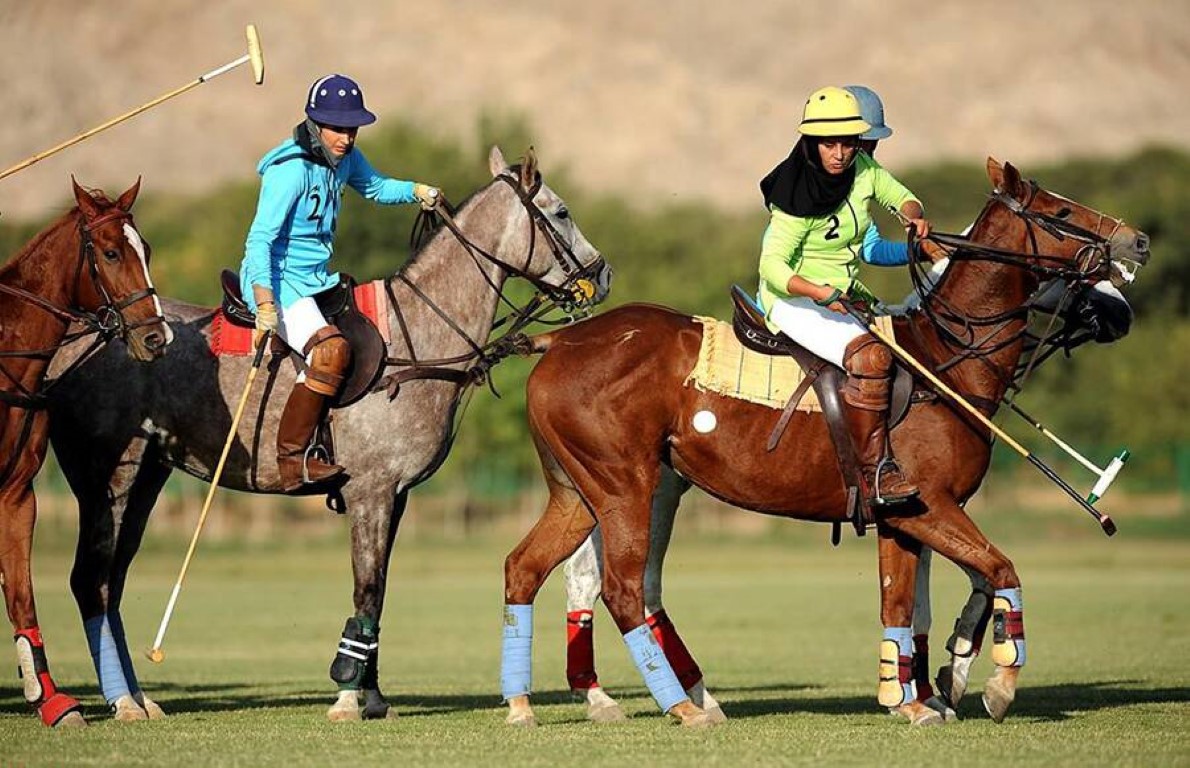
Polo Standards
Polo is played in two different fields; a rectangular turf field and a manage field with appropriate dimensions according to the country where the Polo is running. Turf fields dimensions are 160×300 yards (146×270 meters). Goals are posts which are set eight yards (seven meters and thirty cm) apart, centered at each end of the field. The horsemen hit to the wooden or plastic ball with 3/25 inches diameter (8 cm) and the weight of 4/5 Ounce (140 Grams) with a Bamboo in different size from 120 to 140 cm which is appropriate based on the horse and the horseman height and if the ball passes among the goal columns in each height, it will have a score. Polo can play in 4 or 6 sets (Chukka) for 7 min and 30 seconds with 4 min break between Chukkas and 10 min halftime between second and third Chukkas. When a player galloping to the other part of field, where the ball is throwing there, the other players cannot prevent to cross that player unless they have a rational distance and there is no risk there to him. Bandage the hands and feet the horses for caring them is obligatory in Polo. Beating the Chogan to the feet of the horse, hitting the ball from opposite directions (left side), hitting the ball among the hands and feet of the horse and opponent are the errors in this game. The errors penalties are different based on the game rules and they will do by free knock in on the goal from different distances.
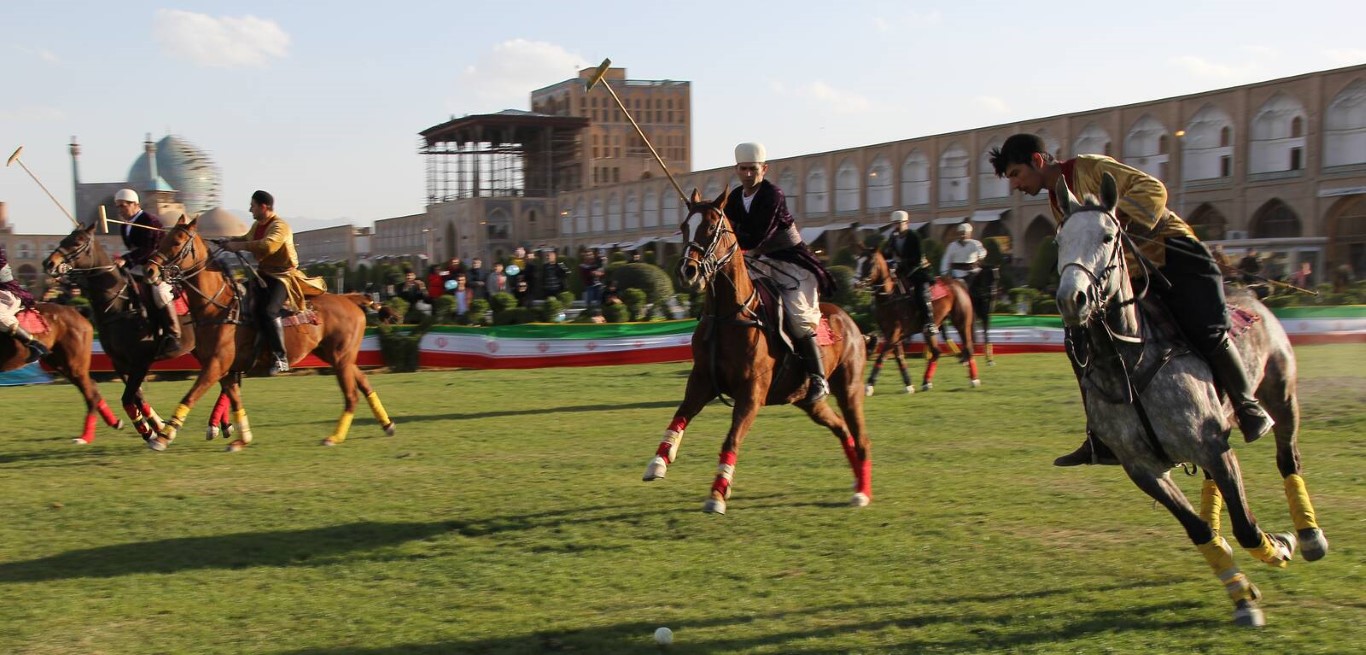
An Exciting Game
In the beginning of Polo match, each four-man team dressed in certain cloths and prepared with necessary facilities such as equestrian helmet, gloves, Polo’s whip, riding boots without laces and knee pads stand behind the midfield line. The first player's (striker) task is to attack and also help to defend. The second player’s (striker) duty is more important in defend, the third player (usually the best player in the team) has the duty to convert the defensive movements to counterattack and the fourth player's (defensive) task is taking away the ball from the goal. After situating the players in the field, the referee throws the ball among them from 4/6 meters distance and the game will start with catch the ball by one of the teams. Each player of teams may change his location in the field with the other player based on the game conditions and then back to his location and ,lead the ball to the opposite team goal by Chogan hit and prevent the ball from entering to their goal according to the special rules by coordination within the group. The field should change after each goal and the winner team is which one who has the more scores at the end of the game. An extra time will give to the game if the scores of teams are equal and the team who achieved more scores will be the winner. Two horseman referees, a seated referee, a time keeper, a goals recorder and one linesman judge the game. Polo matches are just stopped at the end of each Chukka for rest and change the horses in normal conditions .The maximum use of one horse is in 2 Chukkas during a game by horsemen. Polo horses should have special characteristics such as speed, strength and agility. Iranian horse, Kurdish horse and foreign horse and thoroughbred horse are the appropriate horses for this game.
Source: https://www.visitiran.ir/